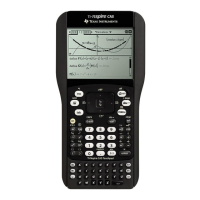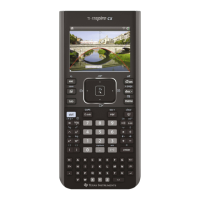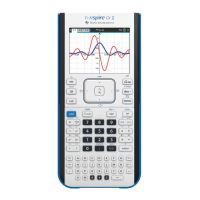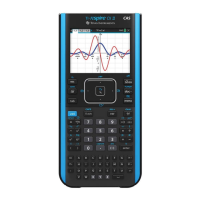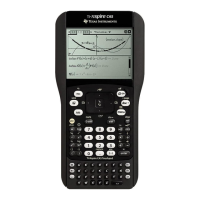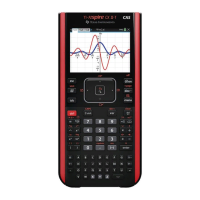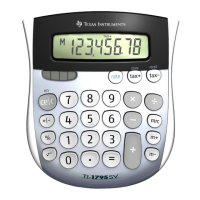22 Alphabetical Listing
►Base2
Catalog >
Converts Integer1 to a binary number.
Binary or hexadecimal numbers always
have a 0b or 0h prefix, respectively. Use a
zero, not the letter O, followed by b or h.
0b binaryNumber
0h hexadecimalNumber
A binary number can have up to 64 digits. A
hexadecimal number can have up to 16.
Without a prefix, Integer1 is treated as
decimal (base10). The result is displayed in
binary, regardless of the Base mode.
Negative numbers are displayed in “two's
complement” form. For example,
⁻1is displayed as
0hFFFFFFFFFFFFFFFFin Hex base mode
0b111...111 (641’s)in Binary base mode
⁻2
63
is displayed as
0h8000000000000000in Hex base mode
0b100...000 (63 zeros)in Binary base mode
If you enter a decimal integer that is
outside the range of a signed, 64-bit binary
form, a symmetric modulo operation is
used to bring the value into the appropriate
range. Consider the following examples of
values outside the range.
2
63
becomes ⁻2
63
and is displayed as
0h8000000000000000in Hex base mode
0b100...000 (63 zeros)in Binary base mode
2
64
becomes 0 and is displayed as
0h0in Hex base mode
0b0in Binary base mode
⁻2
63
− 1 becomes 2
63
− 1 and is displayed
as
0h7FFFFFFFFFFFFFFFin Hex base mode
0b111...111 (641’s)in Binary base mode
►Base10
Catalog >
Integer1 ►Base10 ⇒ integer
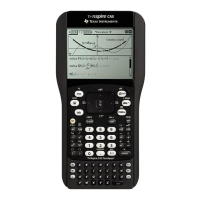
